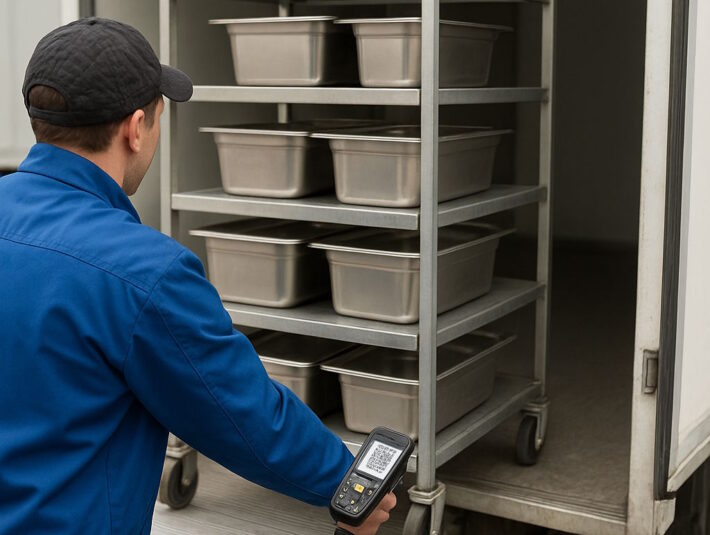8 Strategies to Reduce Your Delivery Costs by 30%

Delivery costs represent on average 10 to 15% of revenue for transport and distribution companies. Faced with increased competition and growing customer expectations, optimizing these costs becomes a major strategic challenge. Good news: with the right tools and methods, it’s possible to significantly reduce these expenses without compromising service quality.
Why do SMEs have an advantage over large corporations?
Contrary to popular belief, SMEs have considerable assets for optimizing their delivery costs. Their agility, rapid adaptation capacity, and customer proximity allow them to implement optimization solutions faster than large structures.
1. Automatically optimize your routes
Potential impact: 15-25% savings on transport costs
Manual route optimization is time-consuming and often sub-optimal. An optimization algorithm can calculate the best itineraries in seconds while considering multiple constraints: time windows, vehicle capacities, delivery zones, real-time traffic.
Concrete example: A food distribution company with 8 drivers reduced their total daily routes by 180 km, achieving 22% fuel savings and 2 hours less driving time.
Key takeaways:
- Average 20% gain on distances traveled
- Route planning time reduced from 3 hours to 15 minutes
- Better utilization of vehicle capacities
2. Automate dispatch according to your business criteria
Potential impact: 8-12% reduction in operational costs
Manual dispatch generates costly errors: poor driver/delivery assignment, non-compliance with specialties, workload imbalance. Automation according to precise business rules optimizes these assignments.
Effective automation criteria:
- Driver specialization (cold chain, fragile goods, B2B/B2C)
- Preferred geographical zones
- Workload balancing
- Compliance with legal time constraints
3. Reduce customer disputes through real-time tracking
Potential impact: 5-8% savings through reduced hidden costs
Customer disputes are expensive: administrative processing, re-deliveries, commercial credits, image degradation. Transparent real-time tracking drastically reduces these situations.
Measurable benefits:
- 70% reduction in “Where is my order?” customer calls
- 50% decrease in delivery time slot disputes
- Improved first-attempt delivery rate
4. Optimize your fleet management
Potential impact: 10-15% on vehicle costs
Better planning allows you to optimize the use of your existing fleet before investing in new vehicles.
Optimization levers:
- Vehicle utilization rate (target: >85%)
- Intelligent delivery consolidation
- Predictive planning to avoid peaks
5. Automate billing to eliminate errors
Potential impact: 3-5% through reduced billing errors
Billing errors generate significant administrative costs and cash flow delays. Automation based on actual delivery data eliminates these risks.
Direct advantages:
- Zero input errors
- Immediate post-delivery billing
- Reduced payment delays
- Decreased administrative time
6. Empower your customers with a dedicated portal
Potential impact: 5-10% reduction in customer service costs
An autonomous customer portal reduces the burden on your teams while improving user experience.
High-impact features:
- Customer-scheduled deliveries
- Autonomous order tracking
- Self-service complaint management
- Accessible history and billing
7. Implement intelligent notifications
Potential impact: 3-7% through improved delivery success rate
Personalized notifications reduce delivery failures, a major source of additional costs.
Effective notification types:
- Day-before delivery notification
- Precise time slot (30-minute window)
- Ability to postpone/modify
- Delivery confirmation
8. Analyze your performance with the right KPIs
Potential impact: 5-12% through continuous improvement
Without measurement, no improvement. Identifying the right indicators allows you to act on the most impactful levers.
Essential KPIs to track:
- Cost per delivery
- First-attempt delivery rate
- Average time per route
- Vehicle fill rate
- Customer satisfaction (NPS)
The key role of technology in this transformation
These 8 strategies cannot be effectively implemented without the right technological tools. An integrated management platform allows you to centralize all these optimizations in a single system, thus maximizing synergies between different levers.
Solution selection criteria:
- Intuitive interface to facilitate adoption
- Modular features according to your priorities
- Integration capability with your existing tools
- Support and assistance in deployment
Case study: Food distribution SME
Initial situation:
- 15 drivers, 200 deliveries/day
- Manual planning: 3 hours/day
- Delivery failure rate: 12%
- Average cost per delivery: €8.50
After implementation (6 months):
- Automated planning: 20 minutes/day
- Delivery failure rate: 4%
- Average cost per delivery: €6.20
- Savings achieved: 27% on delivery costs
Action plan to start right now
Week 1-2: Audit existing operations
- Calculate your actual cost per delivery
- Identify your 3 main problems
- Measure time spent on administrative tasks
Week 3-4: Action prioritization
- Select 2-3 high-impact strategies
- Evaluate available technological solutions
- Plan phased deployment
Month 2-3: Progressive implementation
- Start with route optimization
- Train your teams on new tools
- Measure initial results
Conclusion: Optimization, a profitable investment
Reducing delivery costs by 30% is not a utopian goal, but the result of a methodical approach combining the right strategies and adapted tools. SMEs that invest in this transformation give themselves the means to effectively compete with large corporations while preserving their agility.
The challenge is no longer whether to optimize, but where to start. Each day of delay represents thousands of euros in unrealized savings.
Want to discover how to apply these strategies to your specific situation? Request a demo personalized to see the potential impact on your business.




